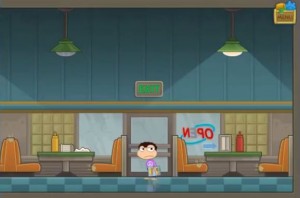Video Games Then and Now
May 20, 2016
 Most current teenagers have grown up alongside technology. This is the product of living in the Digital Age. Because the current generation of teenagers is the first to have grown up under these conditions, we are watching changes in child behavior as they occur. Perhaps most interesting of all, the way in which we entertained ourselves as children changed. We flocked to a new medium to get our daily fix of enjoyment: video games. The sentimental value that was once carried in a doll or stuffed animal has now become digitalized into our favorite computer and console games. But the question becomes: Which video games will we teach our children and grandchildren about? In other words, we are looking for the video games that will stand the test of time. The West Side Story looked at three of the most popular and beloved games from our childhood. These games were Wizard 101, Poptropica, and Webkinz. Each of these games brought a unique element to the table that will be remembered.
Most current teenagers have grown up alongside technology. This is the product of living in the Digital Age. Because the current generation of teenagers is the first to have grown up under these conditions, we are watching changes in child behavior as they occur. Perhaps most interesting of all, the way in which we entertained ourselves as children changed. We flocked to a new medium to get our daily fix of enjoyment: video games. The sentimental value that was once carried in a doll or stuffed animal has now become digitalized into our favorite computer and console games. But the question becomes: Which video games will we teach our children and grandchildren about? In other words, we are looking for the video games that will stand the test of time. The West Side Story looked at three of the most popular and beloved games from our childhood. These games were Wizard 101, Poptropica, and Webkinz. Each of these games brought a unique element to the table that will be remembered.
The first of these games is Wizard 101. Wizard 101 was a MMORPG(Massive Multiplayer Online Role-Playing Game) that appealed to a wide range of children in the current generation. It was released on September 2, 2008 by Kingsisle Entertainment. The game only required a free download to any computer to run.
Upon entering the game, players were asked a series of fun, informative, and entertaining personality questions. Depending on a given player’s answers to these questions, they would be classified as one of the following seven types of wizards: Ice, Fire, Storm, Balance, Life, Myth, or Death. This was one of the most unique and enjoyable aspects of the game. Wizard 101 allowed players to feel special and individual from the very first moment they started the game. Creating factions, each with their own strengths and weaknesses, made the game exciting and offered many different paths for players to choose from.
After the player was assigned to a certain wizard “type” they would enter the wizarding world. Throughout the main gameplay, the player is given many quests that offer rewards such as spells to be used throughout the game. This aspect of the game allowed for minor symbols of accomplishment throughout gameplay, and made the player want to keep playing to complete more quests, for more rewards. A certain addictive element was introduced that greatly counted toward the game’s popularity.
Some of these quests involved combat with in-game beasts. The combat system of Wizard 101 followed that of several other RPGs at the time. Each time a player entered combat, they would be presented with a selection of spells to cast. These spells varied in terms of the damage they would deal to the beast, and the likelihood that they would hit the beast. Throughout these battles, Wizard 101 utilized revolutionary graphics. For its time, Wizard 101 was one of the most innovatively animated games, with eye-popping 3-D graphics in battle. The battle scenes added a whole new level to the game, as players could combine the storyline with strategic combat that tied together the whole experience.
To earn new spells to enhance their combat skills, players could also learn from one of the seven primary schools that corresponded to one’s wizard type. Through this method, players were able to form unique arsenals of spells that matched their wizard type. This was yet another form of customization that allowed the game to thrive.
While the game was spread out between 13 worlds, many of these worlds had to be unlocked via the game’s premium currency, crowns. While this was not enjoyable to players, it allowed Wizard 101 to become profitable quickly by combining superb gameplay with solid business tactics.
Today, new content is still being released, the game is still active and available for download, and it is estimated that there are over 50 million unique users worldwide. This game was fortunate enough to be brought to a large audience, and bring enjoyment to many young kids of our generation. Because of this, it will surely be remembered as one of the best from our era.
In our generation, 3-D graphics and eye-popping battle scenes evidently weren’t the only way to make a game successful. Another game that enjoyed tremendous success with our generation is Poptropica. Launched in September 2007 by Pearson, Poptropica was a great success. While Wizard 101 made its name from the aforementioned qualities, Poptropica used simple 2-D animation and entertaining plots to etch its name among the great video games from our generation.
Poptropica did not require a download, or anything other than working internet. This is because it was played in-browser, by visiting the Poptropica website. Upon arrival to the website, a new can begin gameplay as a guest, or create an account to save their progress. Once this decision has been made, the player is taken to a dashboard that offers them Poptropica news, access to the store, or procession to gameplay.
During gameplay, a player can choose from different islands to explore. Each island has a different, unique plot to it, often with a crime to solve, and an inevitable villain behind it. This system of gameplay provided endless combinations of interesting plotlines for users to choose from, and with new islands always being added, players were always coming back to explore more islands and complete more plotlines.
Upon choosing an island, one enters a 2-D cartoonish landscape. The landscape is also interactive; one can go into buildings, or climb on roofs. This animation style offered a fresh-break from the constant drive for games to be more realistic. Instead, the game returned to the basics of animation, with a simple color scheme and characters created from abstract geometric shapes. This helped it gain popularity as the game that went against design trends of the era.
Like Wizard 101, Poptropica had its own unique quest system. But Poptropica went even further than just offering arbitrary rewards for its quests. The quests that one completed in-game often gave objects as rewards that had a direct link to the storyline later on. Often the connection was unexpected. This kind of reward system made every action in the game valuable, and provided a direct link between the player’s current task and the final outcome.
Finally, Poptropica storylines often culminated with an entertaining minigame. Once one had completed all actions on the island and headed toward the conclusion of an island, a fun minigame was often employed to wrap up gameplay. This provided an interesting twist and was a much better fit to end a thrilling story than any cutscene could provide.
Today, new islands for Poptropica are still being created. The website is still functional, and offers new content, such as outfits for characters. Simple is truly better in some cases, and this saying easily applies in the video game design world. Poptropica didn’t have to use flashy animations and cutscenes, but managed to deliver a top-notch experience and become one of the revered games of our generation.
While it is thought that technology is replacing the toys of the past, such as stuffed animals, there is a game that proves the two can successfully fuse. Webkinz utilized both the physical world and the digital world to create a truly memorable experience. Launched in 2005 by Ganz, Webkinz accounts could only be created by purchasing a stuffed animal. The stuffed animal included an 8-character code which provided account access for one year.
Unlike the aforementioned games, Webkinz had no free gameplay. To access the “Webkinz World” one had to buy a toy, either at a store in the USA or Canada, or buy an access code online. This gave Webkinz a much more commercial aspect, and made it accessible to a smaller audience, albeit while providing more revenue.
Once the access code was entered, the Webkin was considered adopted. Once adopted, players could take care of their pets much like a real pet. They could feed, clothe, house, and accessorize them to no end. This customization again played a factor in keeping users enticed and wanting to keep playing to unlock more content.
Also in-game, players could play different mini games, such as “The Wheel of WOW.” These mini games often gave out items that could be applied to pets, or simply collected, as rewards. Mini games were yet another facet that allowed this game to thrive despite its cost.
Today, Webkinz are still available for sale in all shapes and sizes. The website is still running, and has recently undergone improvements. While Webkinz took a risky and more commercial route, it appears to have been a great success. The game was able to bridge the gap between the past and the present, and allow kids to spring forward to the Digital Age.
Perhaps in many years, our children and grandchildren will entertain themselves with technology we can’t even begin to comprehend. Our video games could seem as primitive as wooden toys seem to us. But this is not the point. Even if our kids seem as though they are eons more advanced than we can ever be, we will still be able to pull out these games, and show them what is was like to be children of the Digital Age.









